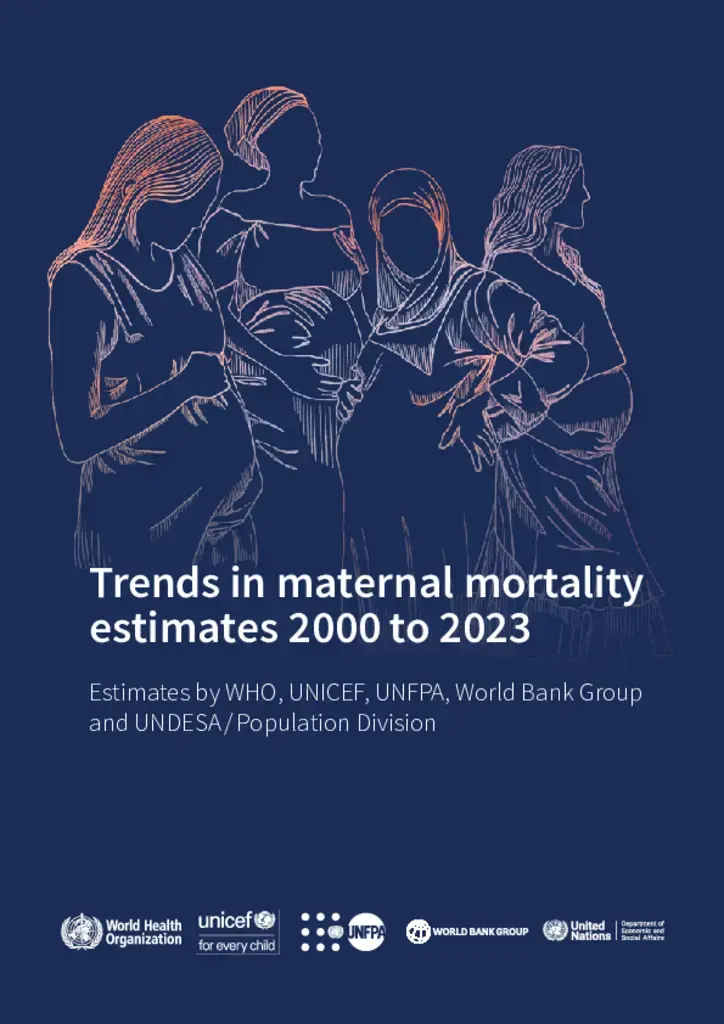Trends in Maternal Mortality: 2000–2023” – New UN Report Highlights Global Gains and Gaps

In News: “Trends in Maternal Mortality: 2000–2023” – New UN Report Highlights Global Gains and Gaps
Source: WHO (7 April 2025)
Topic: Health – Global Maternal Mortality Trends and SDG 3.1 Targets
Context
A new report titled “Trends in Maternal Mortality: 2000–2023” has been released by the United Nations Maternal Mortality Estimation Inter-Agency Group (MMEIG) — comprising WHO, UNICEF, UNFPA, the World Bank Group, and UNDESA/Population Division.
It provides the latest globally comparable estimates of maternal deaths at global, regional, and national levels.
Key Findings
- 260,000 maternal deaths occurred worldwide in 2023 — around 712 deaths per day (≈ 1 death every 2 minutes).
- This represents a 40% decline in maternal mortality since 2000.
- No country in 2023 had an “extremely high” MMR; no region classified as “very high”.
- However, progress remains uneven and insufficient to achieve the SDG 3.1 target (<70 per 1,00,000 live births by 2030).
Regional Insights
| Region | Share of Global Maternal Deaths (2023) | MMR Trend (2000–2023) | Remarks |
|---|---|---|---|
| Sub-Saharan Africa | 70% (≈1.82 lakh deaths) | ↓ 40% | Still highest MMR globally |
| Central & Southern Asia | 17% (≈43,000 deaths) | ↓ 71% | Major success story |
| Eastern Europe | — | ↓ 75% (MMR 38 → 9) | Best performing region |
| Conflict / Fragile Countries | 37 countries (64% of global maternal deaths) | — | MMR ≈ 504 per 1,00,000 live births |
- Low-income nations (2023): MMR = 346 / 1,00,000
- High-income nations (2023): MMR = 10 / 1,00,000
- Lifetime risk:
- 1 in 66 in low-income countries
- 1 in 7,933 in high-income countries
Causes of Maternal Deaths
Around 75% of maternal deaths are due to:
- Severe bleeding (mainly postpartum haemorrhage)
- Infections (usually post-delivery)
- High blood pressure (pre-eclampsia/eclampsia)
- Delivery complications
- Unsafe abortions
Key Barriers
- Poor access to skilled birth attendants (only 73% in low-income countries)
- Inadequate healthcare infrastructure & shortages of medical supplies
- Gender inequalities and low prioritization of women’s health
- Social determinants — low income, poor education, rural isolation
- Fragility due to conflict, climate change, or humanitarian crises
Impact of COVID-19
- Global maternal deaths rose from 282,000 (2020) → 322,000 (2021)due to:
- Indirect causes: SARS-CoV-2 interaction with pregnancy
- Direct causes: Disruption of health services
- Post-pandemic (2022–23): MMR declined back to pre-pandemic trends.
SDG 3.1 Target
“Reduce global MMR to <70 per 1,00,000 live births by 2030, with no country above twice the global average.”
- Global MMR (2023): 197 / 1,00,000
- To meet SDG target → requires ~15% annual reduction rate, rarely achieved so far.
WHO & Global Response
WHO, under the Ending Preventable Maternal Mortality (EPMM) strategy, supports countries to:
- Strengthen universal health coverage for reproductive & maternal care.
- Address inequalities and causes of maternal morbidity & disability.
- Improve data quality and accountability in health systems.
- Promote skilled birth attendance, safe abortions (as per law), and contraceptive access.
Analysis
- Global decline of 40% since 2000 is a positive sign, but the pace is slowing.
- The “geographical inequality” in maternal deaths reflects deeper economic and gender divides.
- Conflict and fragility have become the new epicentres of maternal mortality.
- Stronger primary healthcare systems, midwife training, and community-level surveillance are crucial for further progress.
Conclusion
While the world has made substantial progress, the 2030 SDG target remains off-track.
Urgent investments in maternal healthcare, universal access, and gender equity are vital to ensure no woman dies giving life.
Updated - 8 April 2025 ' 12: 12 PM | https://www.unfpa.org/ & https://www.who.int/